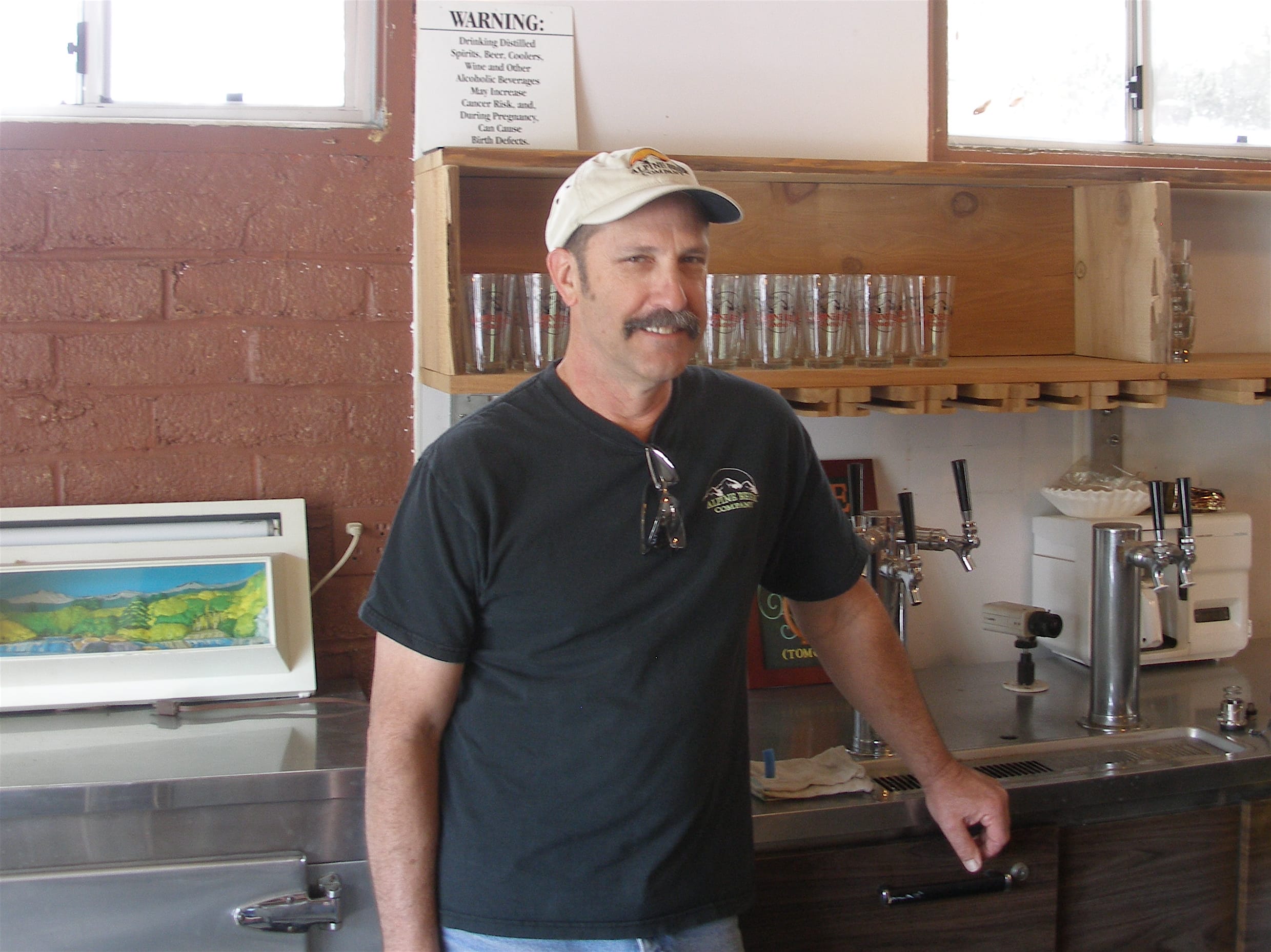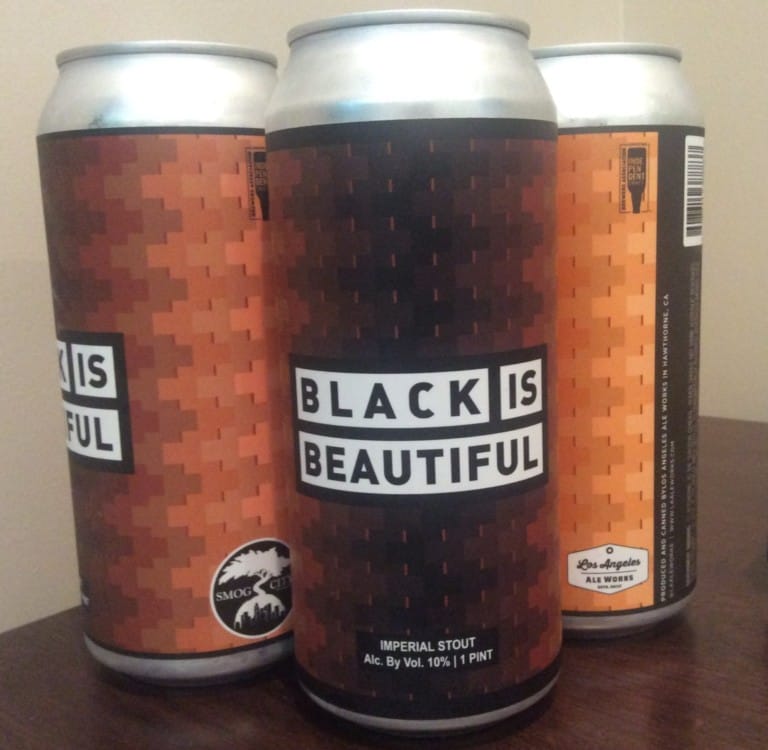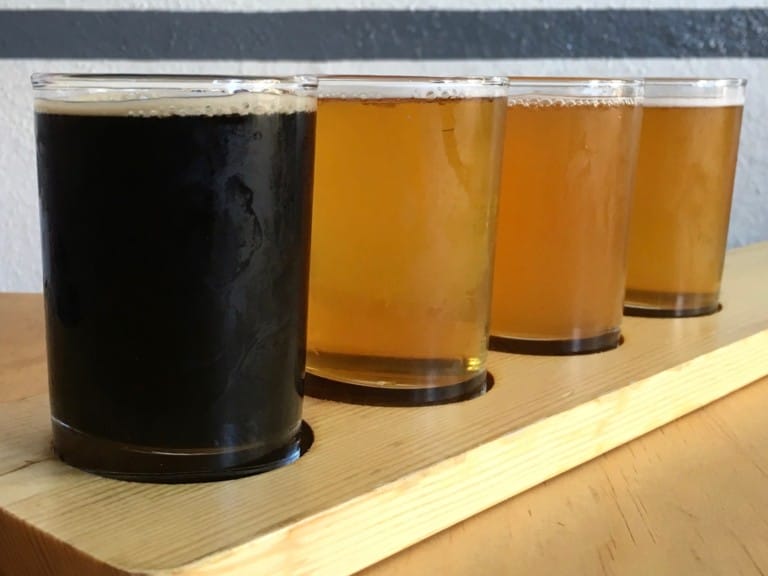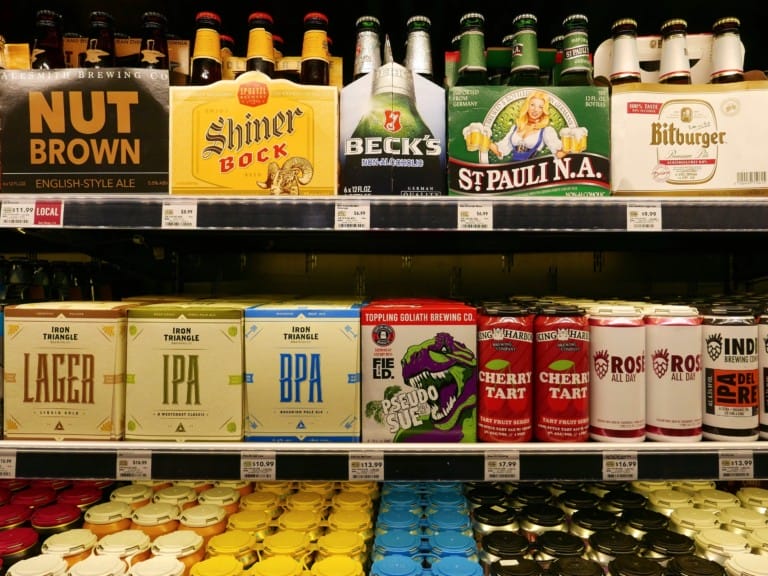When I met Pat McIlhenney, the longtime fireman only had ten shifts left before turning his full-time attention to Alpine Beer Company, the East County brewery he founded in 2002. Good timing. In November, he and son Shawn began their expansion plans, which include tripling production and launching an upcoming brewpub. Later this year, the brewery-adjacent space will have 13 taps with at least 10 Alpines at any given time, plus a small menu of barbecue. We sat at the bar, sharing a progression of sours while he discussed the origin and future of Alpine.
How did you become so interested in beer?
Not only did I think the beer choices in the United States were limited, I wondered why anyone would even bother to drink them. They didn’t have any appeal to me. They had no good flavor. What flavor was there wasn’t noticeable or remarkable in any way. Beer in general just didn’t excite me until I came across a European import that was bold and different. Exciting. I knew there were more opportunities for good beer our there. Availability was the big issue. Once I found out you could actually make your own beer, I started home brewing. I also enjoyed visiting some of the very few brewpubs that were springing up in California. One of the first being Mendocino Brewing Company in Hopland. I was in the fire service and was stationed up in Northern California, so I had an opportunity to actually visit there more frequently than I would have had I just been going up there on vacation. That taught me how there was a business that you could actually run doing that.
When I started home brewing, it was with the intent of opening a brewery someday. My approach was different than just a casual home brewer. I had focus, good note taking, record keeping, entered the beers in competitions, took the judges’ suggestions, made improvements and resubmitted until I was routinely winning medals. Then I would move on to another beer style and develop that flavor until again, I would be successful at it.
What was the first beer that you brewed at home?
McIlhenney’s Irish Red was the first beer I refined to the point where it was winning medals and that was the first commercial beer that I produced by contracting through another brewery [AleSmith]. It sold faster than I could make it, right from day one.
What’s your first beer memory?
Picking up one my parents’ cans of beer, tipping it back, and not spitting it out, but making an awful face, because it didn’t taste that good.
How old were you?
Less than five. Probably around three.
What’s the most recent beer that you developed, and what was your approach?
I just did the AHA Homebrewers Conference symposium beer. It’s an IPA made with hops donated by the hops suppliers who wouldn’t sell me those hops. That’s the most recent one. The one before that would have been last year’s version of Ichabod, which was a Bavarian dunkelweizen flavored with pumpkin, cinnamon and nutmeg.
Do you have a mentor?
Nope. I borrowed good successful business practices from good successful breweries. I didn’t reinvent the wheel here. I just saw what was working for some breweries, the success and the result of that, I would copy that business practice.
Who’s another brewer that you respect and why?
I could name one, but there’s more than just one that I respect out there. All of them are doing a phenomenal job in a time where it’s exciting to be in the beer world.
If you could only drink one more pint of beer, what would it be?
Chez Monieux.
How come?
Because I really like that style of beer, and I worked really hard to get that beer to that condition and flavor. I went to Belgium, and I don’t get out much, so going to Belgium was a big deal, and of course the Belgians have a lot of different varieties within their realm of beers, but I really like sour cherry candy. This reminds me of the old sour Life Savers that came in a roll, individually wrapped. Really tart and sour but with a good flavor. That’s like what this reminds me of. I went to Belgium and went to the 24 Hour Belgian Festival, and the whole time I was there, I was studying one beer style: krieks. Of course I drank other beers, but I focused and made a lot of mental notes on the characteristics of those beers. Anytime I could I would ask the brewer and blender, a lot of the time the blender, how they came up with that particular beer. I knew there were a lot of liberties they took. Blending was one. Using different brewers to brew the different beers they would blend together, just so they could get a really dynamic difference and then blending together makes a totally different beer than you can find elsewhere. That was the beer style that I stuck on trying to perfect, and when I came back, I had a good base and that’s where I started collecting the barrels, started with the formulation for the actual beer base and then deciding what bugs, how many and what kind, I wanted in there.
What are some of the San Diego bars that you enjoy?
I like O’Brien’s. Their variety is phenomenal. I also like really hoppy beers and they’re always have 4-5 different IPAs on tap. They don’t shy away from sours either, so great selection. San Diego Brewing Company has a great selection of beers. Actually the Pizza Port breweries, not only do they have their own beers, which are phenomenal, but they also have guest beers too that are always top notch.









Blog Comments
Food GPS » Blog Archive » Q&A with Alpine brewmaster Pat McIlhenney
June 9, 2009 at 9:20 PM
[…] by admin on June 9, 2009 I knew there were more opportunities for good beer our there. Availability was the big issue More here: Food GPS » Blog Archive » Q&A with Alpine brewmaster Pat McIlhenney […]